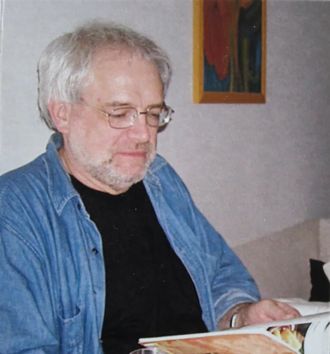{{ item.AUTOREN_ZITAT }}:
{{ item.TITEL }}{{ zitatInLang(item) }}

Charles Patrick Stegall Jr. 1942-2023
by James Bell Cooper
Charles Stegall, mathematician at the Johannes-Kepler-Universität and prominent and influential member of the international Banach space community, passed away in October, after a prolonged period of ill health.
Charles was born and grew up in Shreveport, Lousiana. He studied at the Louisiana State University in Baton Rouge, where he graduated with a Ph. D. in 1970 under the supervision of Ron Retherford. His dissertation was a major contribution to a celebrated problem of Alexandre Grothendieck on the relationship between the finite dimensionality of Banach spaces and the type of operators which function on them. This led to an article in the Transactions of the American Mathematical Society (jointly with Retherford) which established his reputation amongst Banach space theorists. In the next years this was cemented by his work on the Radon-Nikodym property, which concerns the differentiability of absolutely continuous measures with values in a Banach space. Charles established two fundamental results which have had enormous influence on developments in the geometry of Banach spaces and applications to optimisation and existence problems in infinite dimensions (for example, Hamilton Jacobi equations).
I first met Charles at one of the celebrated functional analysis Oberwolfach conferences, which were organised by Gottfried Köthe, who led the post war resurgence of the theory in Germany. We then exchanged visits between Erlangen and Linz and Charles gave a series of lectures on his research at the new mathematics department at what was to become the Johannes-Kepler-Universität. Thus when a functional analysis group was established there, it was natural to offer Charles a position and I was delighted when he accepted. His presence was of enormous importance for the development of this group, and generations of students benefited from his activities, experience and generosity in various ways; mathematically from the extended series of advanced courses and seminars on deeper aspects of Banach space theory including such varied topics as infinite dimensional geometry, descriptive topology, measure theory and combinatorics. However, there were also less tangible benefits which arose from Charles‘ close professional and personal connections with the principal world centres in functional analysis (Warsaw, Jerualem, Paris and, more diffusely, in Germany, Britain and the USA). Charles was very generous in establishing contacts for students and colleagues with elite researchers and institutes and this opened up the possibilities of exchange visits and resulted in joint research projects.In summary, his activities were of fundamental importance in the formation of an internationally recognised research group in functional analysis in Linz.
I have already mentioned the importance of Charles‘ international connections for the development of functional analysis in Linz but, due to the proximity (geographically and mathematically) of Prague, the synergy with the group around Zdeněk Frolík was particulaly fruitful and there were frequent mutual research visits and contacts between Linz and Prague. These were fortified by the traditional Winter Schools (organised by the Prague groups) and blossomed into a long running series of twice yearly joint seminars, which attracted leading functional analysts worldwide, after the opening of the common border.In discussing Charles‘ research, I will concentrate on two results which have been particularly influential. Firstly, his characterisation of dual spaces with the Radon Nikodym property. The result itself is of intrinsic interest but even more influential was the proof, which displayed a remarkable interplay between various topologies on a dual Banach in the situation where the latter is non separable whereas the predual is separable. The second result concerns existence results for optimisation problems. In the classical case, compactness plays a central role in such results but more sophisticated situations often involve infinite dimensions, where compactness fails. Charles identified an important class of not necessarily compact sets (the Radon-Nikodym sets) where a weaker existence result holds which is often more appropriate for applications.
In conclusion, Charles was a deeply serious mathematician, constantly absorbed by the problems he was attacking. But he was also a man of many parts, highly cultured and sociable, with wide-ranging interests in literature, travel, the arts and, in particular, music.
Because of this and his achievements in mathematics, he will be sorely missed, by family, friends and colleagues.